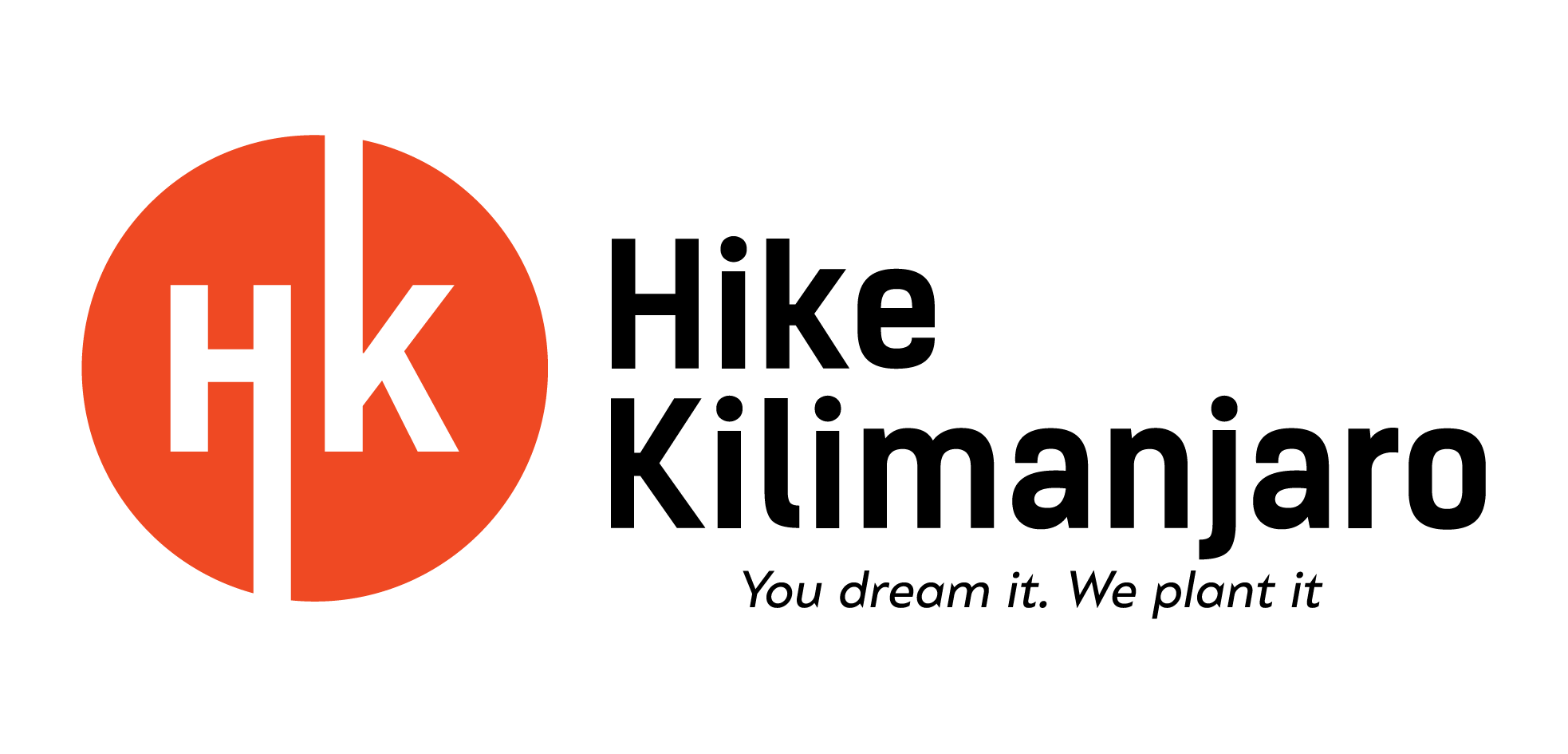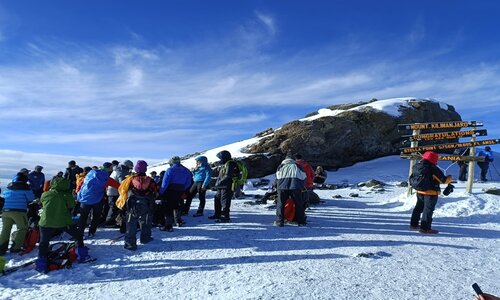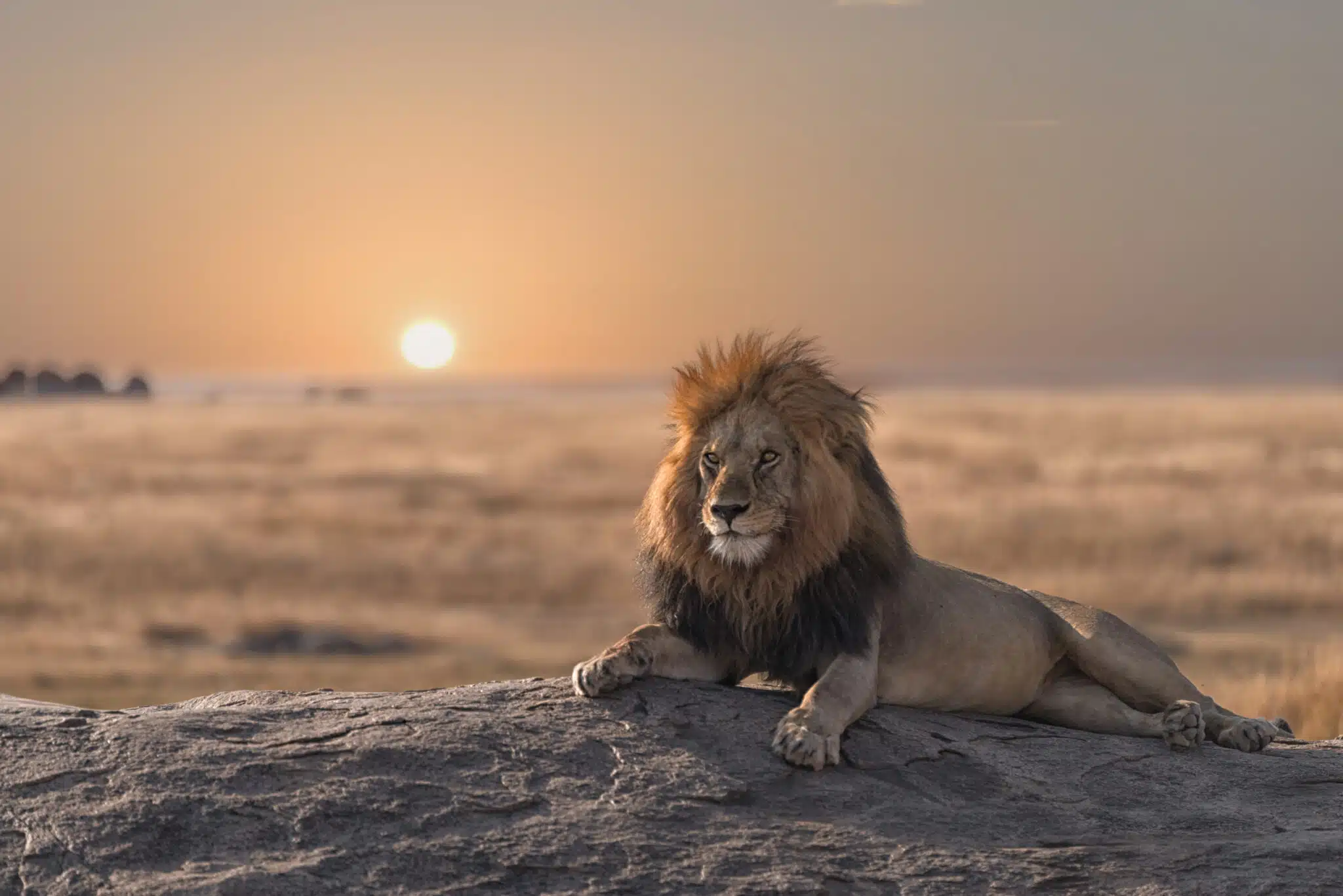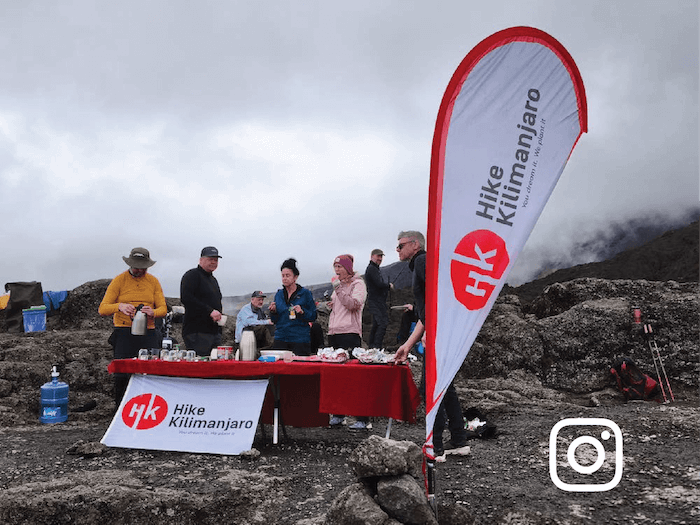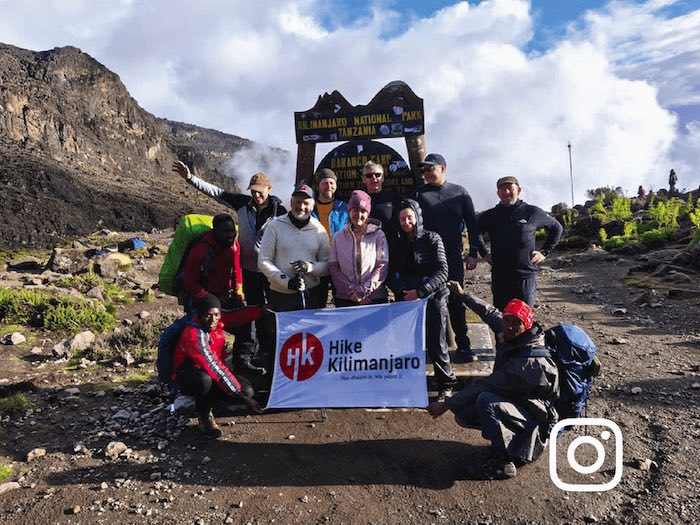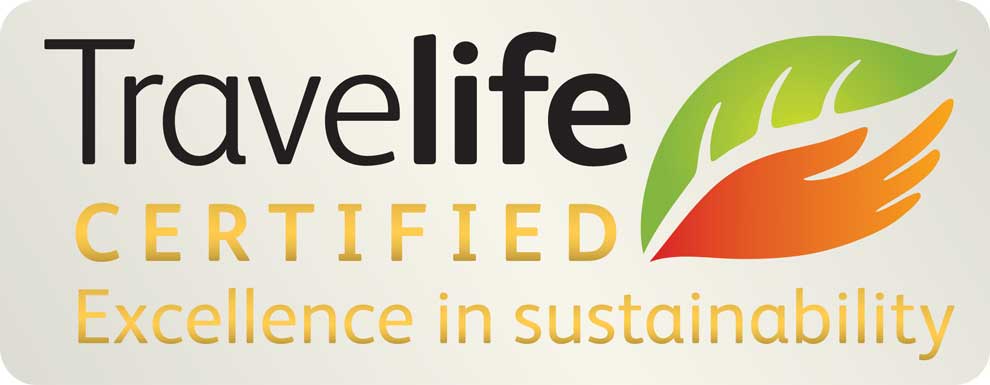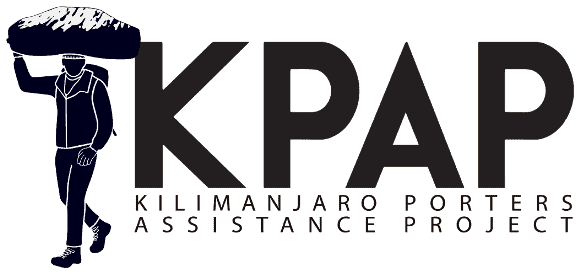Mount Kilimanjaro Weather: What to Expect During Your Trek
Understanding Kilimanjaro weather is essential for planning a safe and successful climb. As Africa’s tallest mountain, Kilimanjaro rises to 5,895 meters (19,341 feet), cutting through multiple climate zones from lush rainforest to glacial summit. This dramatic elevation change creates diverse weather conditions that trekkers must be prepared for.
In this comprehensive guide, we break down the weather by seasons, climate zones, and trekking months, so you know exactly what to expect and how to prepare.
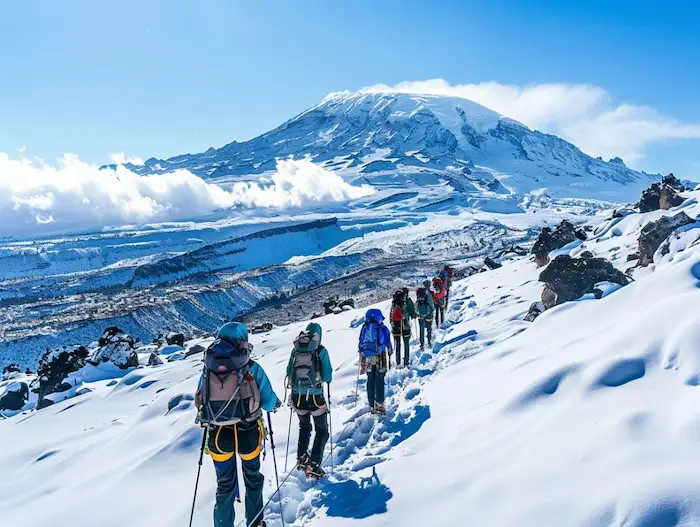
🏞 Climate Zones on Kilimanjaro
Mount Kilimanjaro’s trek passes through five ecological zones, each with distinct weather characteristics.
1. Cultivation Zone (800m–1,800m)
- Warm and humid
- Lush farmland and villages
- Little hiking here; mostly drive-through
2. Rainforest Zone (1,800m–2,800m)
- Hot and humid with high rainfall
- Thick forest canopy with mist
- Rain gear and gaiters are essential
3. Moorland Zone (2,800m–4,000m)
- Cooler with less humidity
- Daytime temps: 10–15°C (50–59°F)
- Nights drop below freezing
4. Alpine Desert Zone (4,000m–5,000m)
- Harsh sun during the day, freezing at night
- Dry air and strong winds
- Sunscreen and lip balm are vital
5. Arctic Summit Zone (Above 5,000m)
- Icy, with oxygen levels at 50% of sea level
- Temperatures drop below -10°C (14°F)
- Snow and glaciers possible even in dry seasons
🌤 Mount Kilimanjaro Weather by Month
✅ Best Months to Climb
January – Mid-March
- Warm temperatures
- Clear mornings and occasional afternoon rain
- Ideal for photography and low crowds
June – October
- Cool and dry
- Peak trekking season with excellent visibility
- Expect colder nights
👉 Compare Kilimanjaro Routes for Each Season
⚠️ Rainy Months (Less Ideal)
Late March – May (Long Rains)
- Heavy rainfall, muddy trails, and low visibility
- Lemosho and Marangu Routes are better in these months due to better drainage and hut accommodations
November (Short Rains)
- Less severe than long rains, but still slippery and wet
- Not ideal for beginners
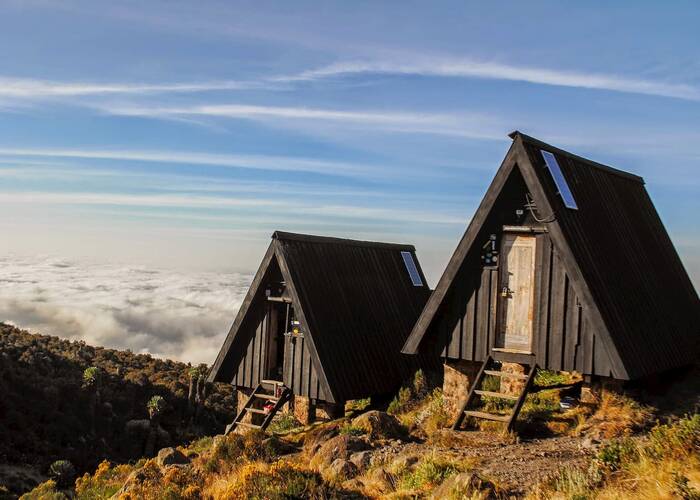
📅 Month-by-Month Overview
| Month | Conditions | Crowds | Best Routes |
|---|---|---|---|
| January | Warm, dry mornings | Medium | Machame, Lemosho |
| February | Great weather, good visibility | Low | Shira, Rongai |
| March | Rain increases late month | Low | Marangu (huts) |
| April | Wettest month | Very Low | Avoid unless experienced |
| May | Trails drying up | Low | Marangu |
| June | Cool, dry, very clear | Medium | All routes |
| July | Cold mornings, dry | High | Lemosho, Northern Circuit |
| August | Stable and dry | High | Rongai, Machame |
| September | Excellent summit conditions | High | Any |
| October | Warmer, clear mornings | Medium | Lemosho, Marangu |
| November | Short rains | Low | Rongai, Marangu |
| December | Dry early, rain possible late | Medium | Shira, Machame |
❄️ How Cold Does It Get on Kilimanjaro?
At the summit, expect nighttime temperatures to drop between -10°C to -20°C (14°F to -4°F), especially at Barafu Camp, Kibo Hut, and Uhuru Peak.
Despite the daytime sun, wind chill, and altitude make the summit is intensely cold, so proper layering is crucial.
☁️ How Weather Affects Acclimatization
Unpredictable weather on Kilimanjaro can influence altitude sickness risks. Sudden storms or cold exposure can weaken your body and slow adaptation.
- Cold nights may reduce sleep quality, impacting energy
- Wet gear from unexpected rain can lower core body temperature
- High winds may increase fatigue and dehydration
Our itineraries include acclimatization days, pulse oximeter checks, and daily health monitoring to maximize safety.
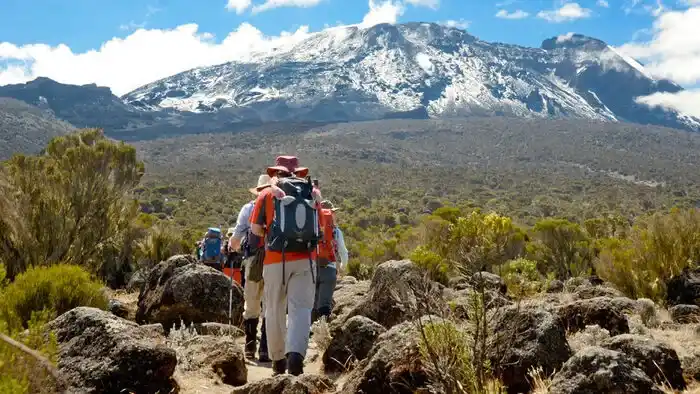
🌦️ Final Tips for Dealing with Kilimanjaro Weather
Layer your clothing: Start warm in the morning and remove layers during ascent
Invest in waterproof gear: A poncho or rain jacket is essential in rainforest zones
Use sunscreen: Even on cloudy days, UV exposure is high
Keep electronics insulated: Batteries drain faster in the cold
Stay hydrated: Dry mountain air increases water loss
🌍 Book with Weather Expertise
At Hike Kilimanjaro, we’ve guided hundreds of successful climbs across all seasons. Our team monitors daily mountain conditions and prepares you for every possible scenario rain, snow, sun, or fog.
Whether you’re climbing in January sunshine or facing the misty rainforest in April, we’ll help you pack, plan, and persevere.
👉 Contact Us for Personalized Trek Advice
👉 Get a Custom Quote Based on Your Preferred Month
Make your dream trip come true with Hike Kilimanjaro .

5/5
Based on 100+ reviews

4.9
Based on 60+ reviews
Customized Travel Proposal
At Hike Kilimanjaro, you can tailor your trip to your preferences. Our sample itineraries are customizable, and our specialists work with you to create your dream trip!
Related posts
These full and frank reviews are from travelers who have traveled with Hike Kilimanjaro previously. The reviews and experiences shown here are from reputable travel websites like TripAdvisor, Google, Facebook, and Trust Pilot, etc.
EXCELLENTVerified "This 3-day luxury safari combined with a Kilimanjaro hike exceeded all my expectations. "This 3-day luxury safari combined with a Kilimanjaro hike exceeded all my expectations. The accommodations were elegant and comfortable, and the guides were knowledgeable and friendly. The safari offered incredible wildlife photography opportunities, and climbing Kilimanjaro was a true test of endurance and strength, but the stunning vistas made it all worthwhile. An exceptional journey that I will cherish forever."Posted onVerified "My entire expectations were surpassed by climbing Kilimanjaro. "My entire expectations were surpassed by climbing Kilimanjaro. When one reaches Uhuru Peak, the sensation of accomplishment is indescribable. Because of the well-planned logistics, the amiable crew, and the breathtaking environment, the entire hike was easy and fun. It is a very remarkable event that I would gladly repeat. For adventurers, it's a must.Posted onVerified Tanzania truly offers a world-class experience. "My trek up Mount Kilimanjaro in Tanzania exceeded all my expectations. The stunning scenery, from lush rainforests to icy glaciers, was awe-inspiring. The local guides and porters were incredibly supportive and professional, ensuring a safe and enjoyable climb. It was challenging but incredibly rewarding. Tanzania truly offers a world-class experience for anyone looking to conquer Africa’s highest peak."Posted onVerified I feel accomplished and thankful. Kilimanjaro climbing was satisfying and difficult at the same time. Along the way, there was breathtaking natural splendour and a variety of diverse habitats. The guiding team's assistance was outstanding and got us through some really difficult times. After completing this amazing journey, I feel accomplished and thankful.Posted onVerified Thanks to their knowledgeable advice. From beginning to end, Hike Kilimanjaro offered a smooth and well-planned trip. Their staff made sure we were at ease and ready by being helpful and considerate. Thanks to their knowledgeable advice, climbing Kilimanjaro was difficult but incredibly gratifying. They are the ones I would most certainly pick again for excursions in the future.Posted onVerified "An amazing and well-planned adventure. "An amazing and well-planned adventure! The climb was fun and safe because of the team's experience and upbeat demeanour. I was encouraged by the journey and pleased to have reached the top of Africa.Posted onVerified Highly recommended this tour agency. Wonderful experience! We had a fantastic trip and enjoyed the entire team; we always felt very protected and taken care of. Highly recommended. I want to thank Keddy in particular; you were the best mentors .Posted onVerified "My Kilimanjaro trek was an extraordinary experience. "My Kilimanjaro trek was an extraordinary experience. The route was well-organized, and the staff was attentive and encouraging throughout the climb. The sense of accomplishment upon standing on the summit was overwhelming. The scenery, the challenge, and the sense of connection with nature made this hike truly special. I highly recommend it to anyone looking for a once-in-a-lifetime adventure."Posted onVerified Well Organized and Unforgettable. Hiking Kilimanjaro with a well-run tour company was an incredible experience. The crew was courteous and made sure we were fed, acclimated, and inspired at every stage. The support from porters and guides, as well as the companionship among hikers, helped to make the difficult days bearable. It was weird to be at the top above the clouds. Undoubtedly a life-long accomplishment I will always treasure.Posted onVerified Top notch safari The customer service is on point. Drivers were there to pick us up on time. We saw all the big 5 in Serengeti /Ngorongoro Crater.The accommodation booked Embalakai had great food and staff.Couldn't have asked for a better safari experience. Top notch
Speak to an Expert
Need assistance with your booking? Our friendly Tanzania-based expert team is here to help. Feel free to reach out with any travel-related questions or concerns.

Maxon

- WhatsApp +255 692 406 444

